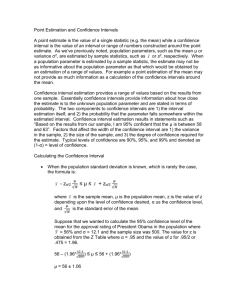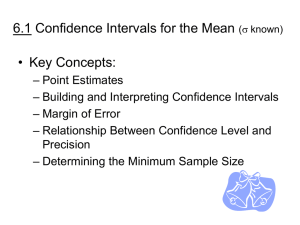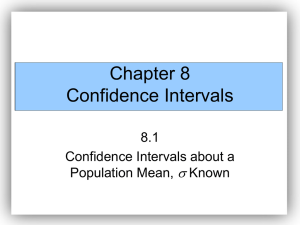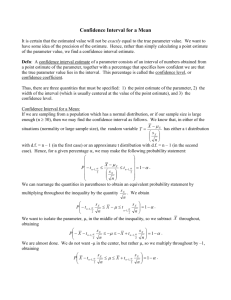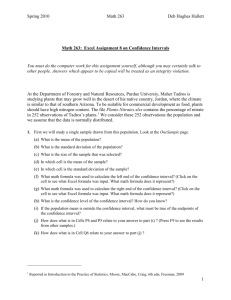Slide 8-1
advertisement
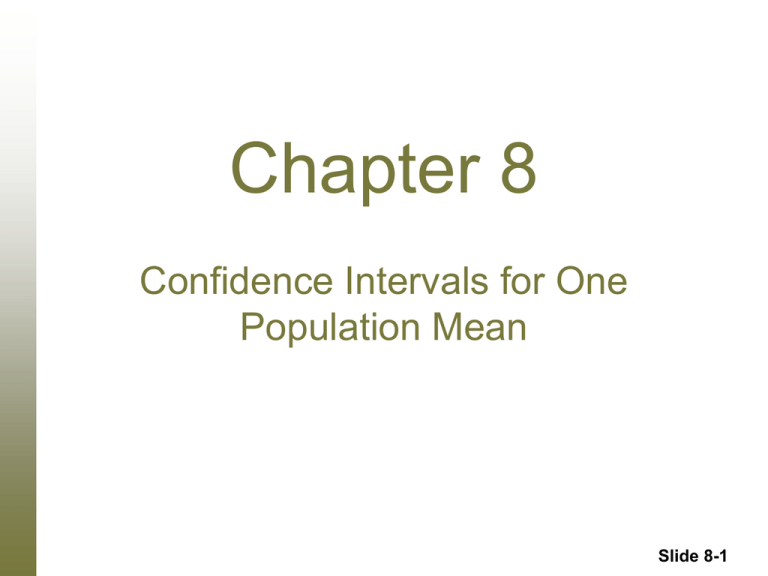
Chapter 8 Confidence Intervals for One Population Mean Slide 8-1 Section 8.1 Estimating a Population Mean Slide 8-2 Definition 8.1 Point Estimate A point estimate of a parameter is the value of a statistic used to estimate the parameter. Slide 8-3 Definition 8.2 Confidence-Interval Estimate Confidence interval (CI): An interval of numbers obtained from a point estimate of a parameter. Confidence level: The confidence we have that the parameter lies in the confidence interval (i.e., that the confidence interval contains the parameter). Confidence-interval estimate: The confidence level and confidence interval. Slide 8-4 Figure 8.2 Twenty confidence intervals for the mean price of all new mobile homes, each based on a sample of 36 new mobile homes Slide 8-5 Section 8.2 Confidence Intervals for One Population Mean when Sigma Is Known Slide 8-6 Figure 8.3 (a) 95.44% of all samples have means within 2 standard deviations of μ; (b) 100(1 − α)% of all samples have means within zα/2 standard deviations of μ Slide 8-7 Procedure 8.1 Slide 8-8 Table 8.3 Ages, in years, of 50 randomly selected people in the civilian labor force Slide 8-9 Figure 8.5 90% and 95% confidence intervals for μ, using the data in Table 8.3 Slide 8-10 Section 8.3 Margin of Error Slide 8-11 Definition 8.3 & Figure 8.7 Figure 8.7 illustrates the margin of error. Slide 8-12 Formula 8.1 Slide 8-13 Section 8.4 Confidence Intervals for One Population Mean When Sigma Is Unknown Slide 8-14 Figure 8.8 Standard normal curve and two t-curves Slide 8-15 Key Fact 8.6 Basic Properties of t-Curves Property 1: The total area under a t-curve equals 1. Property 2: A t-curve extends indefinitely in both directions, approaching, but never touching, the horizontal axis as it does so. Property 3: A t-curve is symmetric about 0. Property 4: As the number of degrees of freedom becomes larger, t-curves look increasingly like the standard normal curve. Slide 8-16 Table 8.4 Values of Slide 8-17 Procedure 8.2 Slide 8-18 Table 8.5 & Figure 8.10 Losses ($) for a sample of 25 pickpocket offenses Normal probability plot of the loss data in Table 8.5 Slide 8-19 Figure 8.11 Normal probability plots for chicken consumption: (a) original data and (b) data with outlier removed Slide 8-20
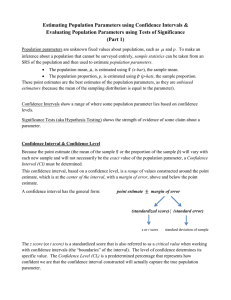
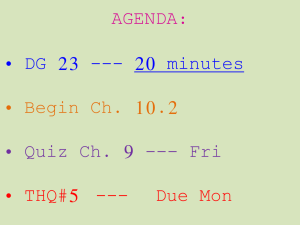
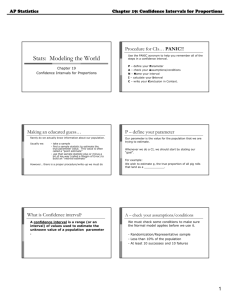

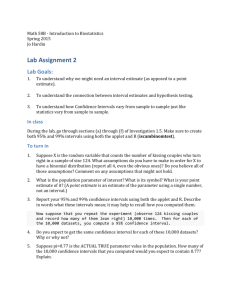
![The Average rate of change of a function over an interval [a,b]](http://s3.studylib.net/store/data/005847252_1-7192c992341161b16cb22365719c0b30-300x300.png)
